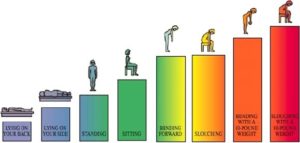
The Components of Ergonomics
Ergonomics deals with human interaction with technological and a range of work situations. It is based upon the human sciences of anatomy, physiology and psychology. These sciences are applied towards two main objectives:
- The most productive use of human capabilities
- The maintenance of human health and well-being
In a phrase, the job must ‘fit the person’ in all respects. Or, stated another way – the work situation should not compromise human capabilities and limitations.
The contribution from anatomy lies in improving the physical ‘fit’ between people and the things they use. This ranges from hand tools to aircraft cockpit design. But achieving a good physical fit is no mean feat when one looks at the range of human body sizes across the population.
The science of anthropometrics provides data on dimensions of the human body, in various postures. Biomechanics considers the operation of the muscles and limbs, and ensures that working postures are beneficial, and that excessive forces can be avoided.

Knowledge of human physiology informs two main technical areas:
- Work physiology addresses the energy requirements of the body. It sets standards for an acceptable physical work-rate and workload; and for nutritional requirements.
- Environmental physiology analyses the impact of physical working conditions – thermal conditions (temperatures), noise, vibration, and lighting. It sets the optimum requirements for these.
Psychology is concerned with human information processing and decision-making capabilities. This can be seen as helping the cognitive ‘fit’ between people and the things they use. Psychology areas relevant to ergonomics are:
- sensory processes
- perception
- long-term and short-term memory
- decision making and action
There is also a strong element of organizational psychology. The concept of ‘information overload’ is familiar in many types of jobs. Paradoxically, by increasing automation, which dispenses with human involvement in routine operations, there is often an increase in the mental demands of monitoring, supervision and maintenance.
Further information about ergonomics can be found at the website of
The Institution of Ergonomics and Human Factors:http://www.ergonomics.org.uk/
To return to the main page on Ergonomics please click here
Copyright ©2012 - 2023 Catherine Tiphanie. All Rights Reserved. Privacy Policy
